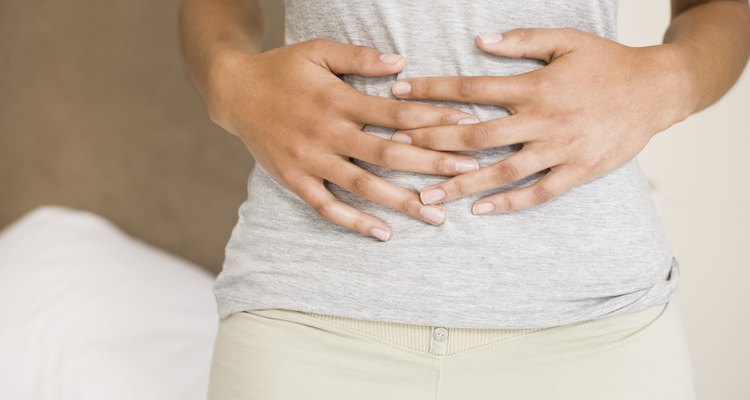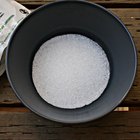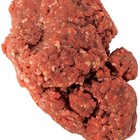
Hemera Technologies/AbleStock.com/Getty Images
According to the Food Borne Illness website, "Shellfish (oysters, clams, mussels) pose the greatest risk and any particular serving may be contaminated; there is no way to distinguish a contaminated oyster from a safe oyster." Oysters can harbor several different types of bacteria and viruses, each with a range of symptoms.
Diarrhea

Jupiterimages/Polka Dot/Getty Images
Frequent, watery stools are common with oyster food poisoning. Excessive watery bowel movements indicate an infection of some kind, and that nutrients and water are not being absorbed.
Vomiting

Jupiterimages/Polka Dot/Getty Images
Oyster food poisoning may involve regurgitation, but not always. Vomiting accompanied with diarrhea is a good indication of infection, but not specifically food poisoning.
Nausea/Abdominal Pain/Cramps

Jupiterimages/Polka Dot/Getty Images
Oyster food poisoning may make the affected individual feel queasy or experience vague abdominal pain and cramps. These symptoms are usually accompanied by diarrhea and vomiting.
Weakness/Fatigue

Pixland/Pixland/Getty Images
Oyster food poisoning leads to malabsorption of nutrients in the bowels, which leads to weakness and fatigue. Look for signs of low energy levels, including the need for increased sleep.
Headache

Stockbyte/Valueline/Getty Images
Headaches may occur as a result of dehydration from the lack of water being absorbed by the body. Headaches may feel throbbing or hammering, or a dull pain in some cases.
Fever

Pixland/Pixland/Getty Images
In the case of Hepatitis A or Norwalk virus food poisoning, the infected individual may experience a sudden or slow onset of fever. If fever is expected, take a temperature reading with an oral thermometer to confirm.
Related Articles

How Long Do Shucked Oysters Stay Fresh?

Nutrition Information on Blueberries

How to Reduce Acne Inflammation

Metamucil Dosage for Cats

What Foods Provide Calcium D-Glucarate?

Swollen Lymph Nodes in Horses

Are Bean Sprouts Good for You?

What Vitamins Help the Liver?

How to Sterilize Eyeglasses
Seafood Gumbo Calories

How to Make Xylitol Toothpaste

Ear Piercings & Swimming

Dangers of Spoiled Ground Beef

How to Get Rid of Skunk Smell With ...

Food Sources of Phosphatidylcholine

How to Clean Maui Jim Sunglasses

How to Gargle With Sea Salt

How to Sterilize Safety Goggles

Skin Benefits of Eating Coconut Oil

Can Age Spots Be Reversed?
References
Writer Bio
Jered Slusher, born in 1987, has been writing online articles since 2005. His poetry and academic essays have appeared in The Ohio State University at Lima "Hog Creek Review." He holds a bachelor's in English from The Ohio State University.
Photo Credits
Hemera Technologies/AbleStock.com/Getty Images